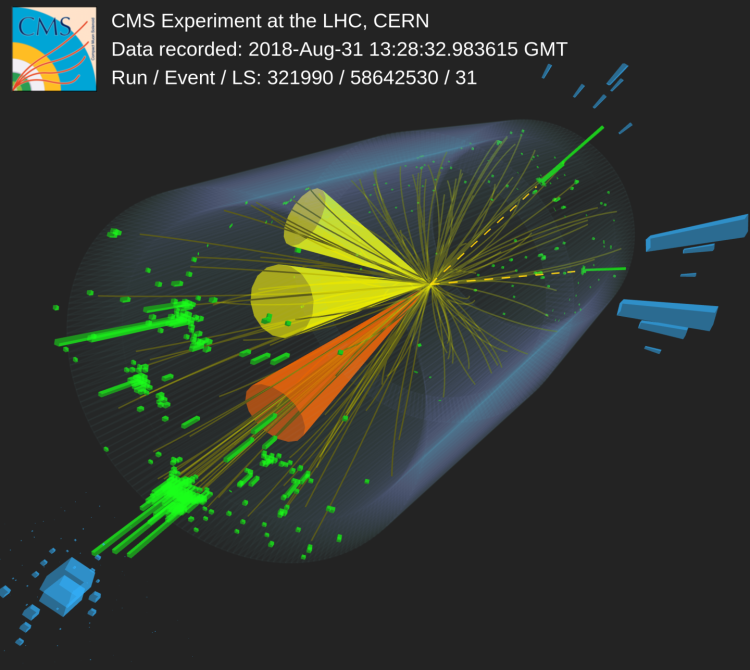The realm of particle physics is a fascinating and complex domain where researchers seek to unravel the fundamental constituents of matter. Among the most celebrated discoveries in this field is the Higgs boson, an elementary particle that plays a pivotal role in the Standard Model of particle physics. Nonetheless, the inquiry into whether Higgs bosons are the smallest particles in existence provokes substantial debate and demands a nuanced exploration. This article will dissect the nature of particles, delve into the characteristics of the Higgs boson, and ultimately evaluate its stature relative to other fundamental constituents of the universe.
To understand the significant role of the Higgs boson, one must first grasp the framework within which it operates: the Standard Model. This theoretical construct describes the electromagnetic, weak, and strong nuclear interactions using a plethora of particles, including quarks, leptons, gauge bosons, and the Higgs boson itself. The Higgs field, ubiquitous throughout space, endows particles with mass through their interaction with this field. This mechanism is essential for understanding why particles such as W and Z bosons have mass, thereby providing the foundations on which our comprehension of the universe is constructed.
The question of whether Higgs bosons are the smallest particles leads us to investigate the hierarchy of particles within the Standard Model. In particle physics, “smallest” can be a misleading term. While the Higgs boson does not possess substructure and is classified as an elementary particle, there exists a profound distinction between the Higgs boson and other elementary particles, such as quarks and leptons. Quarks and leptons, which are also fundamental constituents of matter, exhibit varying properties, such as flavor and color charge, making them intriguing in their own right.
Furthermore, the Higgs boson is unique not only in properties but also in its temporal existence. The particle has a notably short lifetime, leading to its rapid decay into other particles almost immediately after its creation in high-energy collisions, such as those occurring in the Large Hadron Collider (LHC). Consequently, the Higgs boson is not regularly encountered in nature, limiting our direct observational data regarding its behavior and interactions.
Contrary to the notion that the Higgs boson might represent the pinnacle of simplicity, one must consider the existence of other hypothetical elementary particles. For instance, the exploration of supersymmetry posits a mirror sector of particles that could provide deeper insight into the fundamental nature of matter. Supersymmetry suggests the existence of superpartners for all known particles, which might reveal additional layers of complexity beyond the Standard Model. Moreover, the quest for dark matter—a cornerstone of modern cosmology—hints at particles that elude detection through current methodologies, further complicating the clear hierarchy of particle classification.
In addition to supersymmetry, theories such as string theory present alternative frameworks wherein particles are viewed not as point-like entities but as one-dimensional strings vibrating at specific frequencies. In this paradigm, particles—including the Higgs boson—are manifestations of underlying string dynamics. Such theories suggest that there are indeed smaller structures than the Standard Model can account for, thereby inferring that the Higgs boson, while fundamental, is not the ultimate smallest particle.
Another important consideration in this discourse arises from the discussion surrounding quantum fluctuations and the vacuum state. The Higgs boson interacts with various particles in a web of interactions that echo throughout quantum mechanics. These quantum states, often viewed as ephemeral and probabilistic, underscore an inherent ambiguity in defining “smallest” when it comes to particle physics. One must contemplate whether the conceptualization of a “smallest particle” is inherently flawed given the nature of quantum mechanics and its tendency to challenge classical intuitions.
Ultimately, while the Higgs boson is undoubtedly an elementary particle, its classification as the “smallest particle” is contingent upon the criteria employed. It exists within a broader context involving a multitude of other particles and theoretical frameworks that continue to reshape our understanding of the fundamental building blocks of the universe. The interplay of particles, their interactions, and the theoretical constructs devised to comprehend them demonstrates the richness of particle physics as a discipline.
In conclusion, the Higgs boson embodies a cornerstone of contemporary physics and contributes significantly to our understanding of mass and fundamental interactions. However, it is imperative to acknowledge that its status as the smallest particle is not absolute. With ongoing advancements in research and the development of novel theoretical frameworks, physicists remain ever vigilant in their quest to illuminate the intricacies of the universe. The journey towards unveiling the underlying nature of reality is fraught with challenges, yet it reveals the relentless human pursuit of knowledge that defines the scientific endeavor.












